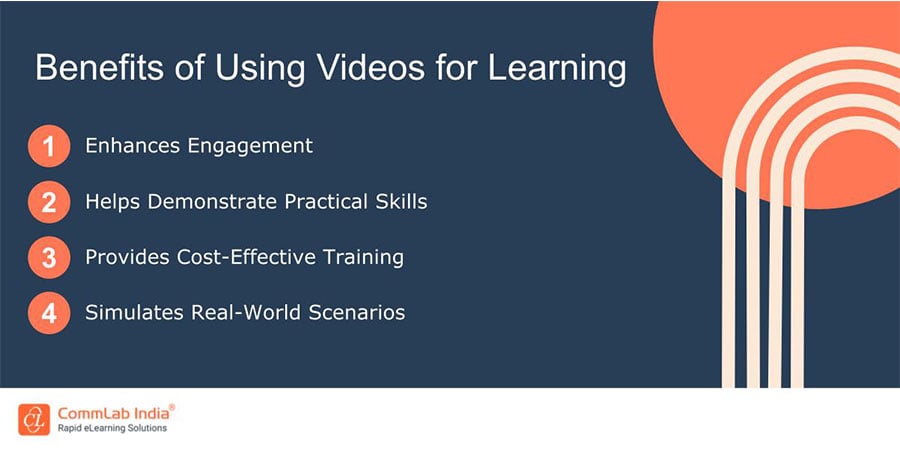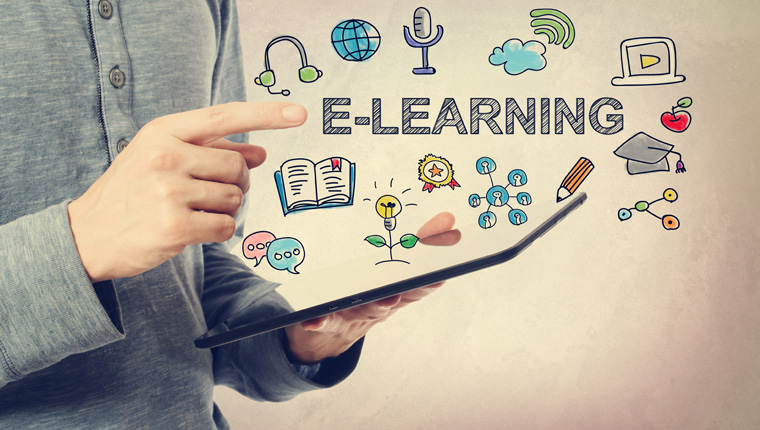Cracking the Code: How to Engage Generation Z in Meaningful Learning Experiences

Welcome to the era of Generation Z, a generation born into a world shaped by the rapid advance of technology, social change, and unprecedented access to information. They're the digital natives, the trendsetters, and the future leaders. However, engaging them in meaningful learning experiences especially in corporate training settings, differs from your typical classroom approach. In this blog, we'll discuss the challenges of training Generation Zs and uncover the secrets to capturing their attention and imagination. We'll explore innovative strategies and tips to bridge the generation gap, ensuring effective corporate training and inspiring lifelong learning.
→ Download Now: Where Does Microlearning Fit in Your Learning Strategy? [eBook]
Table of Contents
- What Makes Gen Z Learners Different from Others?
- What are the Challenges Faced While Training Gen Z Employees?
- How to Engage Generation Z in Meaningful Learning Experiences: 8 Strategies
- How to Get Gen Z Trained for Corporate Jobs: Best Practices
Who are Gen Zs and How to Craft Engaging Learning Experiences for them?
Born between the late 1990s and early 2010s, Gen Z is the internet generation, accustomed to a constantly connected world.
Tips for Craft Engaging Learning Experiences for Gen Zs:
- Short & Engaging: Bite-sized lessons, videos, and infographics.
- Mobile-Friendly: Accessible on smartphones and tablets.
- Interactive: Gamification, simulations, and case studies for practical application.
- Visually Appealing: Graphics, videos, and infographics to enhance retention.
- Personalized: Adapt to individual learning styles and progress.
- Social Learning: Facilitate peer-to-peer interaction and knowledge sharing.
Before delving deeper into the subject, let’s understand what makes Gen Zs learners different from the others:
What Makes Gen Z Learners Different from Others?
Gen Z learners are a distinct group shaped by their digital upbringing. Here's how they differ:
- Digital Dependency: Unlike previous generations, Gen Z has constant access to technology. Smartphones and internet are daily necessities, not luxuries.
- Social Media Centric: Their social lives revolve heavily around online platforms. Interaction and engagement primarily happen virtually, though the specific platforms may evolve.
- Value of In-Person Learning: Despite their digital focus, Gen Z appreciates face-to-face learning experiences alongside online resources. They value the interaction and engagement of in-person sessions.
- Personalization Craving: Traditional one-size-fits-all approaches don't resonate with Gen Z. They seek personalized learning tailored to their interests and needs. Imagine using multiple, specialized apps instead of a single generic one.
- Shorter Attention Spans & Self-Directed Learning: Gen Z learners have shorter attention spans and prefer to learn independently. They might turn to YouTube for quick explanations instead of relying on others.
Owing to these differences, learning and development (L&D) professionals can experience several challenges when training Gen Z employees. Let's discuss them:

Where Does Microlearning Fit in Your Learning Strategy?
Uncover the Secrets to Crafting High-performing Micro Assets!
- What Microlearning is and What it is NOT?
- Types of Microlearning Assets
- Tips and Tools for Rapid Microlearning Development
- And More!
What are the Challenges Faced While Training Gen Z Employees?
Training Gen Z employees requires a shift in approach to address their unique learning preferences. Here are some key challenges:
- Short Attention Spans: Raised in a fast-paced digital world, Gen Z struggles with lengthy content. Traditional corporate training materials with long lectures quickly lose their focus.
- Digital Overload: Constant digital stimuli from social media and entertainment bombard Gen Z, making it difficult to concentrate on learning.
- Personalization Expectations: One-size-fits-all training doesn't resonate with Gen Z who value individuality. They expect personalized learning experiences tailored to their interests and skill gaps.
- Preference for Visual & Interactive Content: Text-heavy materials are less engaging for Gen Z. They thrive on multimedia elements like videos, infographics, animations, and interactive simulations that make learning more engaging and improve information retention.
- Desire for Peer Collaboration: Gen Z is a highly social generation that thrives on collaboration. Solitary learning environments may not be effective. Training programs should incorporate group projects, discussions, and peer-to-peer learning activities to foster engagement, create a sense of community, and develop essential teamwork and communication skills.
- Inclusivity and Diversity: Socially conscious, Gen Z expects training materials and programs to reflect diversity and inclusion. They value training that addresses these topics and promotes cultural competence. Avoidance of stereotypes and biases is crucial to ensure all learners feel represented and valued.
These challenges necessitate a move towards microlearning, digital detox strategies, personalized learning paths, and interactive multimedia content. Incorporating collaborative components and ensuring training materials are inclusive will help create a more engaging and effective learning experience for Gen Z employees.
How to Engage Generation Z in Meaningful Learning Experiences: 8 Strategies
1. Use of Technology
In an age where smartphones and digital devices are extensions of their very beings, integrating technology into training is paramount for engaging Generation Z. This generation thrives on interactive and multimedia experiences. From interactive online quizzes to learning apps and virtual reality simulations, technology offers a gateway to captivating and effective learning. By harnessing the power of technology, trainers can provide dynamic and immersive learning experiences that resonate with Gen Z's tech-savvy sensibilities, making the learning journey not just informative but enjoyable.
2. Short, Visual Content
Generation Z's attention span is famously short, and they are accustomed to processing vast amounts of visual content daily. Utilizing short videos, infographics, and visually appealing presentations can be a game-changer. These bite-sized, visually stimulating formats can convey complex information in an easily digestible manner, ensuring that learners stay engaged and focused. Visual content also taps into their preference for quick and impactful learning, making it a vital tool in the trainer's arsenal to create meaningful learning experiences for Gen Z.

3. Interactive Learning
Generation Z learners thrive in interactive environments. Utilizing interactive learning techniques in training can captivate their attention and enhance their comprehension. Incorporating online quizzes, polls, and interactive exercises into virtual instructor-led training sessions enables learners to actively engage with the material. These methods allow for immediate feedback, which is particularly appealing to Gen Z's desire for quick information consumption. Moreover, interactive elements promote critical thinking and problem-solving skills, making the learning experience not just informative but also intellectually stimulating.
4. Collaborative Learning
Generation Z is known for its social nature, and collaborative learning environments resonate with their desire for interaction. Group projects, online forums, and collaborative tools provide opportunities for learners to work together, share ideas, and learn from one another. This fosters a sense of community and engagement, creating a supportive learning ecosystem where learners feel connected to their peers and the subject matter. Collaborative learning also teaches valuable teamwork and communication skills, which are essential in both corporate and real-world settings.

Where Does Microlearning Fit in Your Learning Strategy?
Uncover the Secrets to Crafting High-performing Micro Assets!
- What Microlearning is and What it is NOT?
- Types of Microlearning Assets
- Tips and Tools for Rapid Microlearning Development
- And More!
5. Real-World Application
Generation Z is highly practical and seeks to understand the real-world relevance of what they learn. Trainers can make learning more meaningful by connecting lessons to practical applications and future career opportunities. By demonstrating how classroom knowledge is directly applicable to real-life situations, trainers can engage Gen Z learners on a deeper level.
This approach not only makes learning more relevant but also empowers learners with the understanding that their training directly contributes to their future success. Incorporating real-world examples, case studies, and guest speakers from relevant industries can illustrate the practical implications of the subject matter, sparking Gen Z's interest and enthusiasm for learning.
6. Gamification
Gamification involves applying game elements, such as points, rewards, and competition, to non-game contexts, including training. Generation Z responds positively to gamified learning experiences as they find them engaging and enjoyable. By incorporating elements like leaderboards, badges, and challenges, trainers can create a sense of achievement and motivation in the learning process. Gamification can also make complex topics more approachable and easier to digest, as it breaks them down into manageable tasks. As an advanced approach, you can also try direct game-based learning as well if gamification doesn’t work that well. Here are a few major differences between the two -

7. Social Media Integration
Social media platforms are an integral part of Generation Z's daily life, making them valuable tools for educational engagement. Companies can create dedicated groups or channels for discussions, resource sharing, and collaborative projects on platforms like Facebook, Twitter, or Slack. These spaces allow learners to engage in informal and peer-led learning, facilitating a sense of community and connectivity outside of traditional classrooms. Additionally, social media integration provides opportunities for learners to explore current events, access a wealth of information, and interact with experts and thought leaders in their field of work.
8. Storytelling
Storytelling is an engaging training technique that resonates with Generation Z's narrative-driven culture. Instead of presenting information in a dry and academic manner, trainers can frame lessons as stories. Stories have the ability to engage emotions, capture attention, and make information more relatable and memorable. Whether through real-life anecdotes, historical narratives, or hypothetical scenarios, storytelling can illustrate complex concepts and connect them to real-world applications. Trainers who master the art of storytelling can make the learning experience more enjoyable and impactful, as learners are more likely to remember and internalize lessons presented in a narrative format.

Where Does Microlearning Fit in Your Learning Strategy?
Uncover the Secrets to Crafting High-performing Micro Assets!
- What Microlearning is and What it is NOT?
- Types of Microlearning Assets
- Tips and Tools for Rapid Microlearning Development
- And More!
How to Get Gen Z Trained for Corporate Jobs: Best Practices
Experimental Learning: Gen Z thrives on active learning experiences. They learn best by doing. Incorporate formats like simulations, case studies, and project-based learning. These hands-on approaches encourage research, decision-making, and taking action, fostering deeper understanding and engagement compared to traditional lectures.
Social Learning: Collaboration is the lifeblood of learning for Gen Z. They value knowledge sharing and co-creation, actively seeking out opportunities to learn from peers and online communities. Corporate training programs can leverage this strength by incorporating group discussions, peer-to-peer mentoring, and online forums. These social learning elements foster a sense of community, promote diverse perspectives, and encourage active participation, leading to a more enriching learning experience.
Personalized Learning: AI-powered Learning Journeys: Standardized approaches are a thing of the past for Gen Z. They crave a learning experience that feels personal and relevant. Enter AI-powered adaptive learning. These intelligent systems leverage machine learning algorithms to assess learners' strengths, weaknesses, and learning styles. Based on this data, the AI tailors content delivery, recommending resources and activities that align with individual needs. This personalized approach ensures Gen Z receives the most relevant information for faster knowledge acquisition and improved retention. Imagine Gen Z learners taking an online training module that adapts to their choices, offering deeper dives into areas of interest and streamlining explanations for familiar topics. This targeted learning journey, powered by AI, fosters a more engaging and effective learning experience for the digital generation.
Informed Learning with Integrated Tech: Empower Gen Z to be active participants in their development. Offer choices within learning modules and integrate technology with traditional classroom settings for a more engaging experience.
Hybrid or Blended Learning: Gen Z seamlessly navigates online and offline learning. A blended learning approach that combines classroom learning with eLearning provides flexibility and a fun learning environment.
Microlearning: Attention Spans Conquered! Forget lengthy lectures – Gen Z thrives on bite-sized content. Short videos are especially effective, allowing them to quickly grasp complex concepts and retain information. But the options extend beyond video. Consider incorporating microlearning formats like engaging podcasts, information-dense infographics, or short audio clips. This variety caters to different learning styles and preferences, ensuring Gen Z stays focused and motivated throughout the training.
What Sets Microlearning Apart From Other Learning Methods? [VIDEO]
Conclusion: Engaging Gen Z for Effective Training
Gen Z learners are a unique group shaped by technology and social change. Traditional training methods may fall short. This blog explored the challenges and offered solutions to create engaging learning experiences:
- Understanding Gen Z: We identified their digital dependence, social learning preferences, and desire for personalization and short, interactive content.
- Engaging Strategies: We explored 8 strategies to bridge the gap, including using technology, bite-sized visual content, interactive learning, collaborative activities, real-world application, gamification, social media integration, and storytelling.
- Effective Practices: We provided best practices for corporate training, emphasizing hands-on learning, collaboration, personalization, microlearning, integrating technology, and a blended learning approach.
By implementing these strategies, organizations can create training programs that resonate with Gen Z, fostering a more engaged and effective learning environment for the future workforce.
Microlearning is a game-changer for engaging Gen Z and boosting learning outcomes. But where do you start? Download and explore our eBook: "Where Does Microlearning Fit in Your Learning Strategy?
Learn how to:
- Integrate microlearning seamlessly into your training programs.
- Craft bite-sized content that's engaging and impactful.
- Measure the success of your microlearning initiatives.
Editor’s note: This post was originally published on October 12, 2023 and has been updated for comprehensiveness.



![What are the 10 Popular Microlearning Platforms in 2024? [Infographic]](https://blog.commlabindia.com/hubfs/blogs/popular-microlearning-platforms-info.jpg)
![Why Microlearning Is the Ideal Training Format for Gen Z Workforce [Infographic]](https://blog.commlabindia.com/hubfs/blogs/microlearning-ideal-training-format-gen-z-infographic.jpg)
